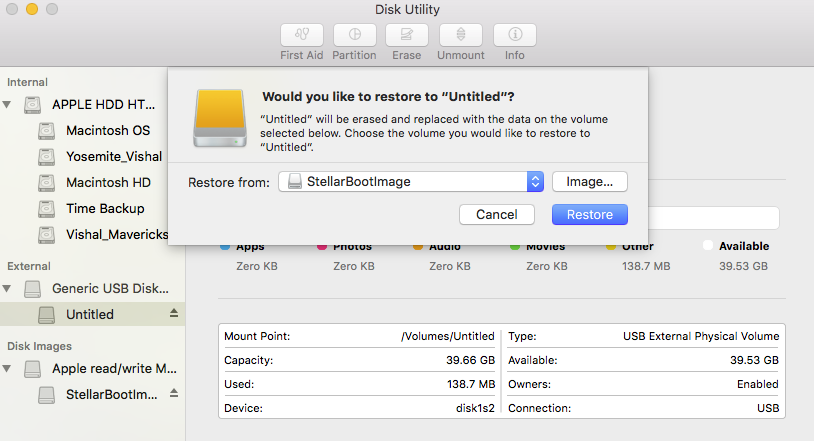

Next, click the Image button next to Source and point to the InstallESD.dmg file recently copied to the desktop.
Launch Disk Utility and click on the partition to copy the install files to, then click the Restore tab. Drill-down through the Contents | Shared Support directories and drag-drop the InstallESD.dmg to the desktop ( Figure D). This reveals the contents of the installer itself and makes navigating the structure possible. Right-click the installer and select Show Package Contents from the context menu ( Figure C). Apple OS X 10.7 (Lion), 10.8 (Mountain Lion) Certain versions of OS X will require a different procedure to complete. 
With the drive now partitioned properly, see the sections below to go about copying the media/installer contents to the drive.
Click the Options button, select the GUID Partition Table, and then click OK and Apply to commit the changes ( Figure B). I suggest naming each partition with the OS X version that will occupy the space to make it easier to identify later ( Figure A). Launch Disk Utility.app and partition the external drive as three separate partitions of 8 GB each. However, the limit is really based on the total capacity of the drive to be used. Partitioning the driveįor the purposes of this article, I’ll be creating three installers of OS X: 10.8, 10.9, and 10.10. Also, since many Macs include SD card readers, a large capacity SD card could be used instead of a USB drive as well. When considering the requirements, particularly the flash drive size and speed, I recommend accommodating a minimum of 8 GB per OS X installer and preferably supporting USB 3.0 specification for faster file transfers as opposed to USB 2.0, which will work admirably, but slower. USB flash drive with at least 8 GB for each version of OS X to be supported. Install DVD media/DMG or installer for each version of OS X to be included. There are a few requirements I’d like to share with you prior to beginning the tutorial: Below is a solution to ease the load by providing access to any versions of OS X in one small, easy-to-carry, bootable flash drive. Unfortunately, business operations often dictate a different method than that, leaving it up to IT to bridge the gaps caused by fragmentation between multiple OS, hardware, and software instances.įor IT staffers, there’s seemingly no end to the number of tools they must carry with them, doubly so if they provide mobile support. 
In an ideal world, sysadmins everywhere would only need to manage one or two operating systems–one desktop, one server–and nothing else. Jesus Vigo reviews the process to create a mutliboot USB drive used to install multiple versions of OS X. How to create an OS X multiboot USB install drive







 0 kommentar(er)
0 kommentar(er)
